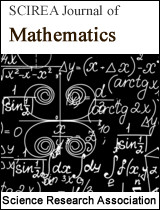Representation theorem of composite odd numbers indices
DOI: 543 Downloads 16483 Views
Author(s)
Abstract
We study the composite odd numbers via their indices with a function ranging through all of them. This mapping allows us to demonstrate that the set of these indices are described with two families of finite sequences with arithmetic differences. Composite odd numbers are then shown to be obtained as differences of two squares. We then conjecture odd primes do not appear randomly.
Keywords
composite odd numbers; indices; sequences with arithmetic differences; finite sequence; differences of two squares; odd primes; not appear randomly; reference points; remarkable index
Cite this paper
WOLF Marc, WOLF François,
Representation theorem of composite odd numbers indices
, SCIREA Journal of Mathematics.
Volume 3, Issue 3, June 2018 | PP. 106-117.
References
| [ 1 ] | 2016, Robert Lemke Oliver et Kannan Soundararajan, "Unexpected biases in the distribution of consecutive primes" - Proc Natl Acad Sci U S A. 2016 Aug 2; 113(31): E4446–E4454. Published online 2016 Jul 14. doi: 10.1073/pnas.1605366113 |
| [ 2 ] | Alexander Berkovich AND Will Jagy, On representation of an integer as the sum of three squares and ternary quadratic forms with the discriminants p2, 16p2 Journal of Number Theory, Volume 132, Issue 1, January 2012, Pages 258-274 |
| [ 3 ] | 12 nov 2009, Alexander Berkovich, Hamza Yesilyurt : Ramanujan’s identities and representation of integers by certain binary and quaternary quadratic forms |
| [ 4 ] | Ono, Ken; Soundararajan, Kannan (1997). "Ramanujan's ternary quadratic form" (PDF). Inventiones Mathematicae. 130 (3): 415–454. MR 1483991. doi:10.1007/s002220050191. |
| [ 5 ] | S. Ramanujan, (1916). "On the expression of a number in the form ax2 + by2 + cz2 + du2". Proc. Camb. Phil. Soc. 19: 11–21. |

